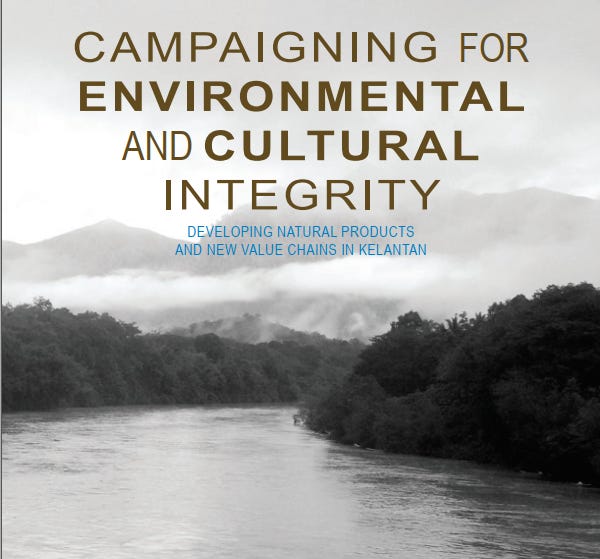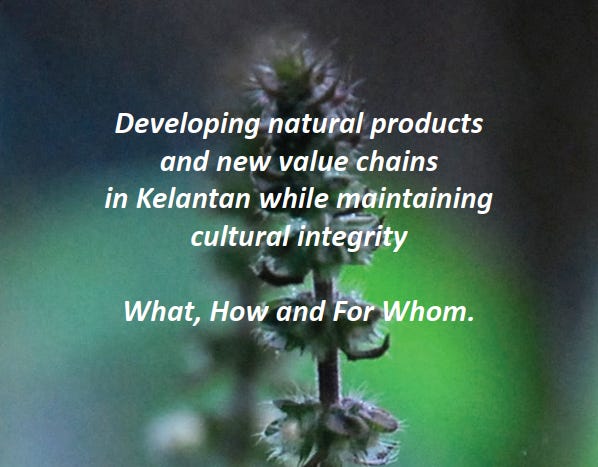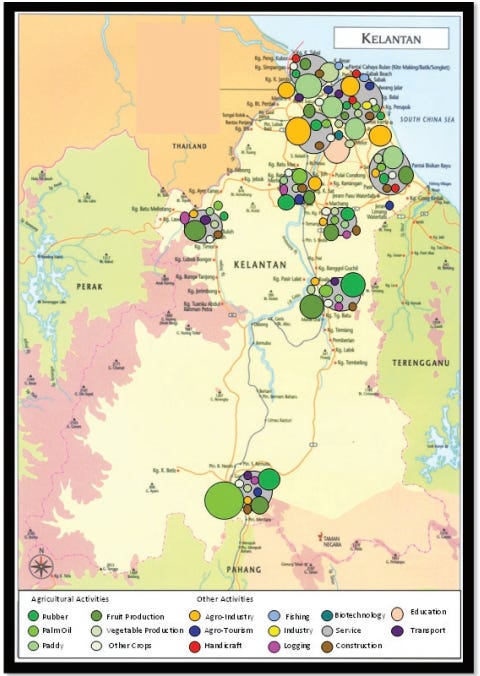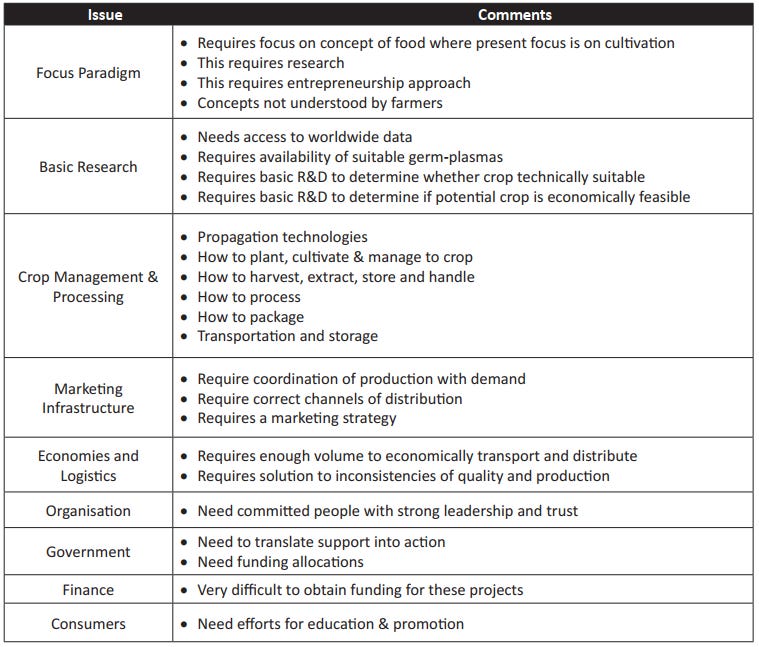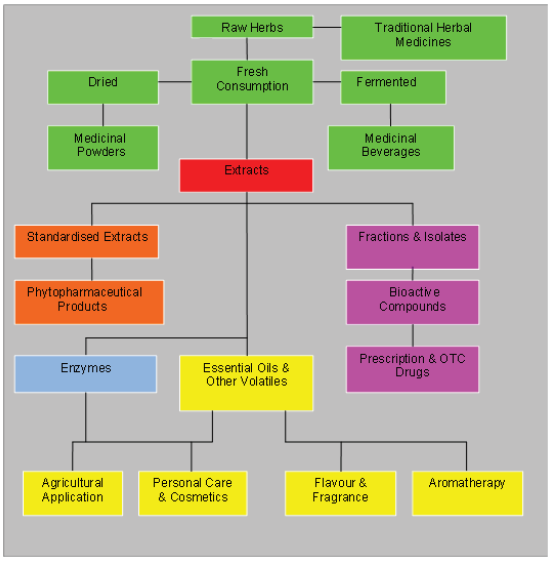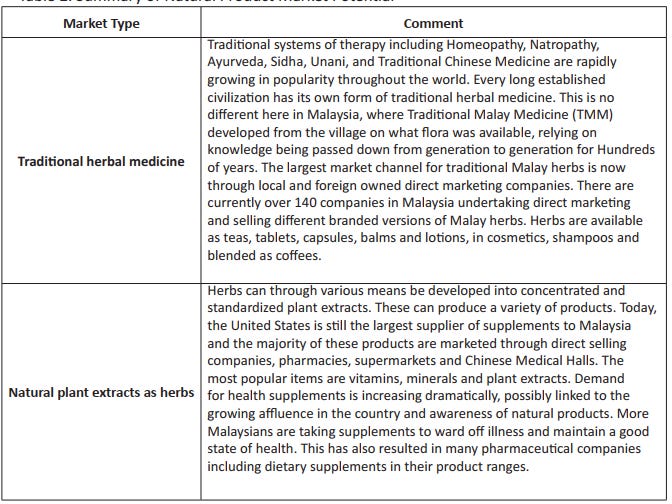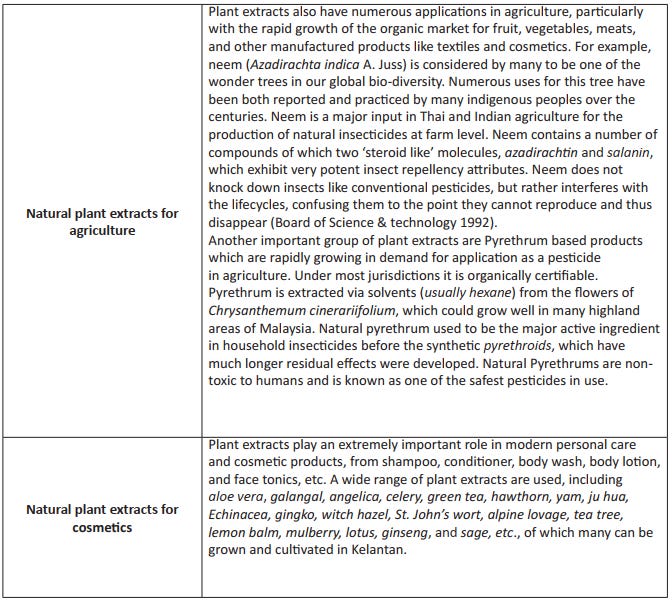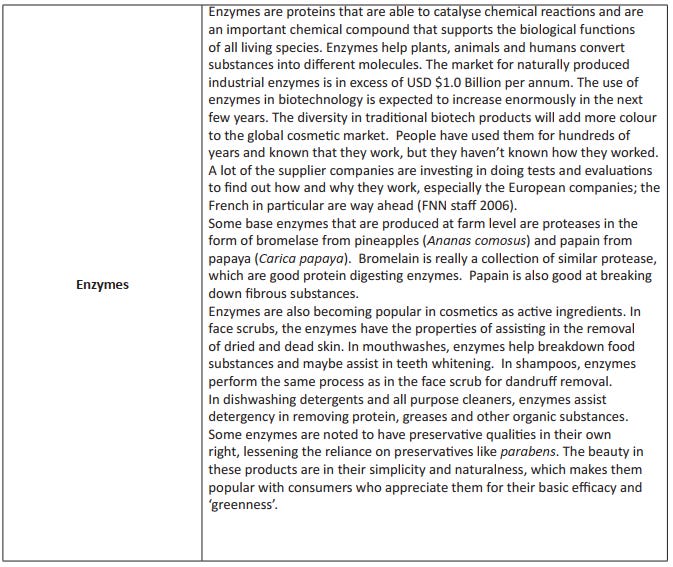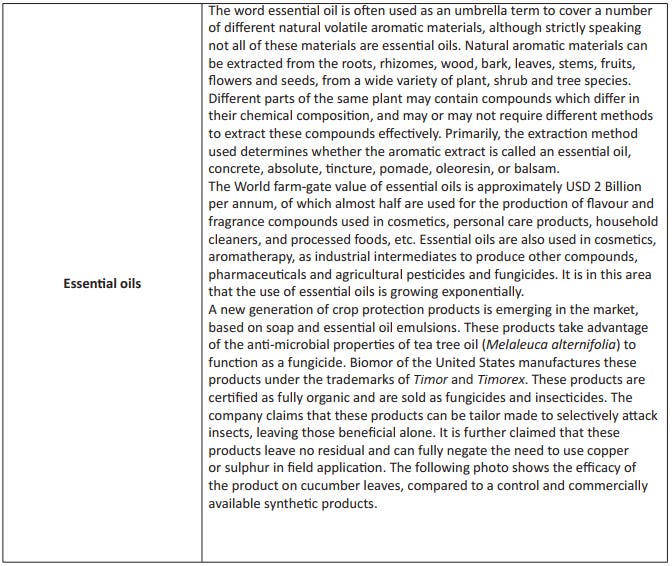Developing natural products and new value chains in Kelantan while maintaining cultural integrity: What, How and For Whom?
Keynote Address to the Conference on Plant Natural Products: Integrating Traditional Practices & Technology Advancement for Creating Business Opportunities, 21-22 November 2011, Grand River View Hotel
Abstract
Kelantan, situated in the Far North-East of the Malay Peninsula has been built upon the proud traditions of a rural based social-economy. The Malaysian state of Kelantan has been relatively independent, without direct foreign occupation and control since the early 1400s, except for short periods by the Siamese and Japanese. Malay tradition and culture is relatively undiluted in Kelantan in contrast with the other states in Malaysia. Maintaining cultural integrity and traditions is something important to both the social and spiritual identities and aspirations of the Kelantanese, and this factor must be considered in any potential development in the state.
Therefore the development of natural products in Kelantan must be approached differently from the rest of Malaysia due to the above cultural factors and aspirations of local people. Ignoring international opportunities for natural based products would disadvantage Kelantan, but at the same time ushering in large multinational companies to exploit Kelantan’s natural resources such as land would have high social costs from the Kelantanese perspective.
This implies that the development of natural products should be on a small enterprise scale rather than large enterprise scale, the new industries do not drastically change cultural conditions, and this be achieved with limited resources and more upon local exploration and cooperation, rather than outside interference. Consequently business models based on cooperative labour and shura decision systems, in decentralized production units would be a preferred option. Marketing paradigms need to be developed that carry Kelantanese culture as a theme specializing in particular niche markets need to accompany these new production models.
The potential for natural product development in Kelantan along the business models outlined above include herbs, essential oils, nutraceuticals, cosmoceuticals, natural dyes, Islamic medicines, food ingredients, traditional products, and some biotechnology based products including organic agricultural chemicals, all with Toyyib/Halal integrity can be developed and commercialized with specialized value chains based on low resource endowments. These products have specific markets nationally, regionally, and internationally through new supply chains developing across the world including organic, Fair-trade, and Halal markets.
This paper will discuss the above issues, canvass what products can be developed, how they can be developed and new value chains created, with a low resource endowment on the part of local entrepreneurs.
Introduction
“On one hand, rural development starts with people and their education, organization,
and discipline. Without these three, all resources remain latent, untapped potential.”
E.F. Schumacher 1975, P. 168.
Kelantan is situated in the far North-East of the Malay Peninsula, bordering the Southern Thai province of Narathiwat in the North, Perak in the West, Taman Negara in the South, and Terengganu along the East Cost. The majority of Kelantan’s 1.45 million inhabitants reside on a fertile coastal flood plain where paddy, rubber, and fruit crops are produced. There is a long established fishing industry situated where the Kelantan River meets the South China Sea. Kelantan is accessible by road along the coast, from the Western part of the Peninsula through Grik and Jeli, and now to Kuala Lumpur through Gua Musang via Pahang. The Titiwangsa Mountains running North-South along the Western border of Kelantan has historically isolated the state from the rest of the Peninsula, where Southern Thailand influence has been much stronger in many regards. The Malay language is unique in Kelantan with Jawi still being used throughout the state in preference to Rumi. Malay traditions and pastimes like kite flying, bird competitions, top spinning, kertok (drumming), and even wayang kulit are still embedded within Kelantanese life.
The state of Kelantan has been relatively independent, without direct foreign occupation and control, except for short periods by the Siamese and Japanese. As a consequence, Malay culture and tradition in Kelantan is relatively undiluted in contrast to the other states of Malaysia. Kelantan is not necessarily in the race to become an industrialized region. Development has tended to be more selective and focused upon creating the ability to earn a livelihood within the framework of particular SME type activities in preference to manufacturing industry is a priority for those domiciled in Kelantan. Development in Kelantan, particularly the rural areas may be closer to the Schumachian model with a Kelantanese and Islamic flavour, rather than the Rostow model[1]. The structure of kelantan’s economy is different from the rest of Malaysia in that;
There is greater reliance of self-employment (mainly food and service industry),
A higher incidence of small holder rather than plantation type agriculture,
Lower reliance on manufacturing for a salaried livelihood, and
A stronger cultural identity.
As a consequence Kelantan does not necessarily bare the full brunt of economic downturns and recessions in the same way that other parts of Malaysia does.
It is apparent that Kelantanese prefer a village based life, where 65% of the population is rurally domiciled, compared to those living in other states. The gap between urban and rural dwellers is economically wide, but Kelantanese see the benefits of living in rural areas, notwithstanding that there are some disadvantages in education and exposure to opportunity. In rural areas, school dropout rates are higher, the propensity to attend higher institutes of education lower, resources scarcer, potential markets smaller, networks weaker, and exposure to the outside world where new ideas come from much less. The potential of business growth is much more limited. In addition, families tend to be more preoccupied with making a living today rather than seeing the wisdom of sending their children for higher education. Businesses tend to be more simplistic and service orientated, focusing in providing a ‘day to day’ survival rather than SMEs with high growth objectives.
In addition to the above orientations and issues, technology has been very difficult to obtain because of cost, remoteness, lack of knowledge of opportunities, and lack of educational infrastructure. However with the advent of University Malaysia Kelantan (UMK) this scenario may slowly change as the university develops effective local outreach where locally orientated research results and technology is disseminated to the community. This may assist in the local communities accessing basic skills and technologies which widen the scope of entrepreneurial opportunity[2].
Many Government agencies and programs aimed at eradicating poverty in the region have lacked market orientation. Any individual success would appear to be more the result from a few committed and passionate ‘local champions’ who have been able to develop the imagination and commitment of the people they are working with. Many different models have been utilized and new initiatives launched which often seem to lack thought and sensitivity to the target groups they are aimed at empowering[3].
The Current Economic Environment
The economy of Kelantan is primarily rural based with paddy, rubber, and palm oil taking up the greatest acreage. Fruit and market gardening are also undertaken around populated areas where there are local markets. There is a logging industry based on rubber-wood, although in some areas logging is undertaken directly from the jungle. Light scale SME based agro-industry exists primarily based around the coastal areas near Kota Bharu, along with a light scale industrial base primarily catering for local engineering needs. An established fishing industry operates along the coast with spasmodic agro and eco-tourism throughout the state. Cottage handicraft industry producing kain batik, silver, and wooden products also exist on the fringes of the urban areas, these activities not penetrating into the deep rural areas as these enterprises still need a significant amount of capital. The local construction industry supplies local stock needs for residential and light commercial premises. A product space map showing the density and relative size of these industries is shown in Figure 1.
Natural product based activity development is still limited in Kelantan. There are a couple of green biotechnology pilot projects underway, initiated by the Kelantan Biotechnology Corporation, and a small number of domestic herb companies have initiated contract growing and the local processing of herbs within the state. Crops produced under contract arrangements include Tongkat Ali (Eurycoma longfolia), Misai Kuching (Orthosiphon stamineus), Mas Cotek (Ficus deltoidea), Pegaga (Centella asiatica), and Dukung anak (Phyllanthus amarus). SME based herb companies are restricted due to the lack of GMP facilities available for contract processing within the state. Some minor production of essential oils and natural cosmetics is also undertaken within the state.
Given the above, it is necessary to seek new areas that can provide better returns than the present activities, where the focus must rely less on traditional crops and more on new crops that can provide adequate returns. These new crops must be able to be produced without relying on high capital concepts of production and economies of scale, thus not disrupting present culture and lifestyle. This requires building new supply and value chains and changing the present paradigm from competition amongst local SMEs to that of creating cooperative and complementary businesses that can enter new markets. This will require a lot of guidance on how to discover, evaluate, develop, and grow a new SME within remote locations that connect with national and international markets[4].
Figure 1. A product space map showing the density and relative size of these industries
This could initially be developed as a secondary activity at a farm and village level, where it is important to consider and understand the resources and skill needs, attitudes, and aspirations when engaging with communities. Selected activities can be clustered in certain areas where all resources, skills, and connections can be made easily accessible to members of the community. These are the critical factors behind the success of the batik industry in Kelantan (Ma’rof & Fariborz 2010). Given agriculture’s limited capacity to absorb labour, other rural business activities have a paramount importance in playing a role in supplementing incomes (Shand 1983). Government and the institutional sector through the Eastern Corridor Economic Region (ECER) need to provide the infrastructure such as adequate roads, cold stores, extraction facilities, and other infrastructure that is outside the capacity of local entrepreneurs to purchase and develop on their own.
The smallholder sector generally has a very low technology base. There has also been a large failure in successfully implementing new crops and developing village based products in the sector. Research institutions like MARDI follow only national new crop agendas, so regional new crop development is left to the various state agriculture departments, most having extremely limited resources for research, development and extension[5].
There are a number of steps required to successfully implement a new crop, which needs technical, management, entrepreneurship skills and finance. Financial institutions are extremely reluctant to advance funding for new crops and technology development. Smallholders have traditionally only been interested in cultivating crops for other people to market and sell, thus missing more profitable parts of the value chain.
Table 1. Issues and problems Encountered in New Crop Development[6]
The author believes that failure to solve the many issues and exploit opportunities mentioned above, have a basis in a socio-psycho ‘mindset’ prevailing in the country. This is not to say that a change in mindset is the only factor that would result in solving problems and exploiting opportunities. Infrastructure, education, skills development, market scanning, new crop product and processing development and last but not least, financial support are all factors, just as important to make change. However without mindset change, the allocation of resources into all the other areas is not likely to change the nature of the rural sector.
The Path to Development of Natural Products in Kelantan
Herbs, plant extracts, enzymes, and essential oils are all natural products that require agriculture production, processing, and a serious marketing effort. All these classes of products can be cultivated in Kelantan and have rapidly growing applications and international markets. Although herbs, plant extracts, enzymes and essential oils are diverse products, they share common plant based feed-stocks, however uses and markets are diverse as shown in Figure 2., The family tree of herb derivatives. Together herbs, plant extracts, enzymes, and essential oils make up a group of potential opportunities for agro-entrepreneurs.
Figure 2. The family tree of herb derivatives (Hunter 2011).
Most of the product categories shown in figure 2 are in high growth mode both in the domestic and international market. Table 1 provides a brief summary of each market. What is necessary at this point is to identify specific segments in potential markets that value chains can be created to satisfy from the Kelantan perspective. This may mean focusing on specific niche markets rather than mainstream high volume markets where local SMEs would come up direct against more efficient producers from neighbouring countries like Indonesia, Vietnam, India, and China. This implies a feasibility relationship between product, channel, agronomic and technology suitability, to determine viability.
Table 2. Summary of Natural Product Market Potential
Plant extracts in some form or another due to both scientific and market reasons are leading to pronounced aspirations on the part of consumers to use more in the future. Thus this opportunity involves both the sourcing of new potential plant extracts and the determination of the viability to produce existing herbal extracts of trade. From the market point of view, many more options exist to develop specialized value chains that can meet the requirements of specific sets of consumers[7].
The development of new plant extracts generally involves the identification of active molecules and their associated mechanisms of action, requiring expensive studies to demonstrate efficacy and absence of toxicity. The production of existing plant extracts involves the setting up of a supply/value chain concerned with the production of plant biomass at the beginning, harvesting and processing of the crude materials, the processing of an extract and standardization, the development of a consumer product in some cases, and finally its distribution to consumers. This requires making the correct choices in order that these activities become are viable, and consequently there must be some quick method of investigation and evaluation – a current weakness in the Malaysian biotechnology/natural product development paradigm to date. This is important as failure discourages future attempts and creates negativity about a potential new agro-based activity. The ‘upstream’ usage of many products is most often ignored or left to hearsay and unsubstantiated information ultimately leads to failure. This is an unfortunate story told over and over again in Malaysia.
There are three important areas that will determine the viability of any natural product. First are the actual characteristics and the nature of the product itself. Second is the agronomic viability of the crop in local conditions, and third includes the specific project issues. The next section will outline each area and briefly describe the important points to consider when making a determination about new material or product viability.
Go to part two here
You can subscribe for free emails of future articles here:




